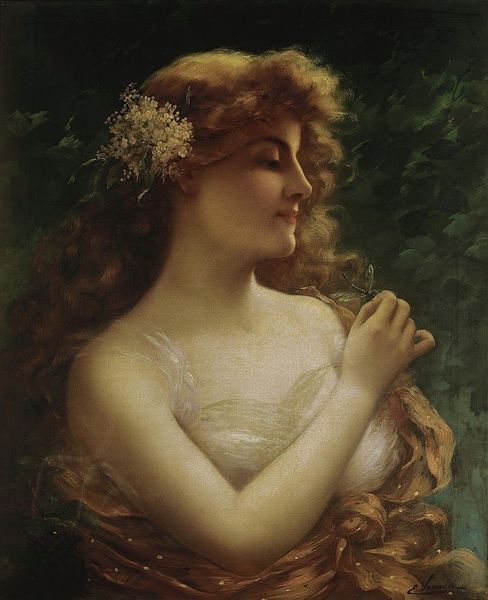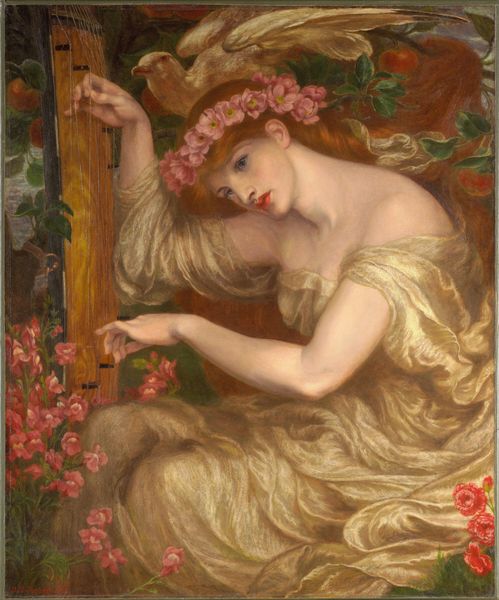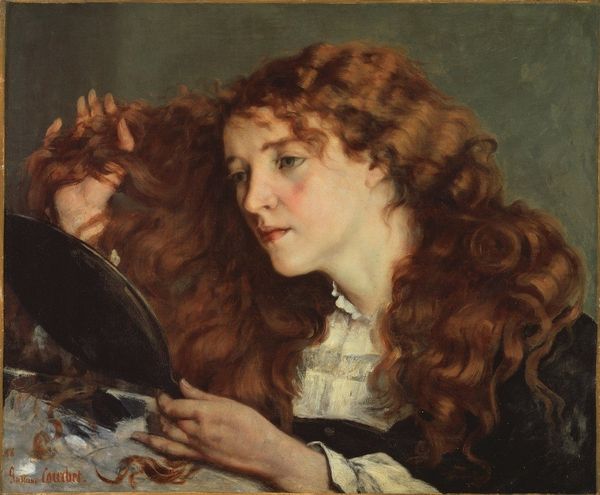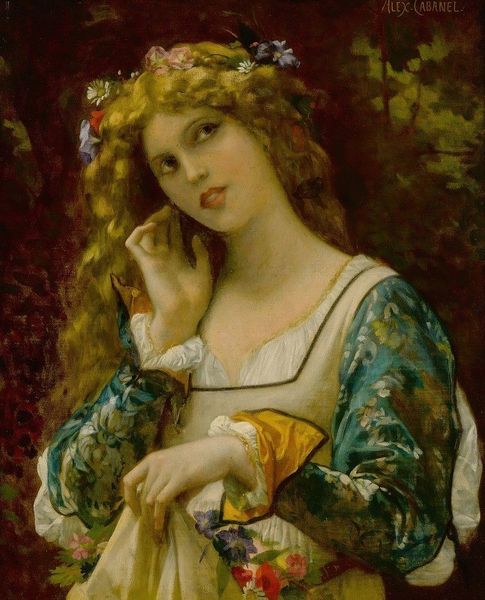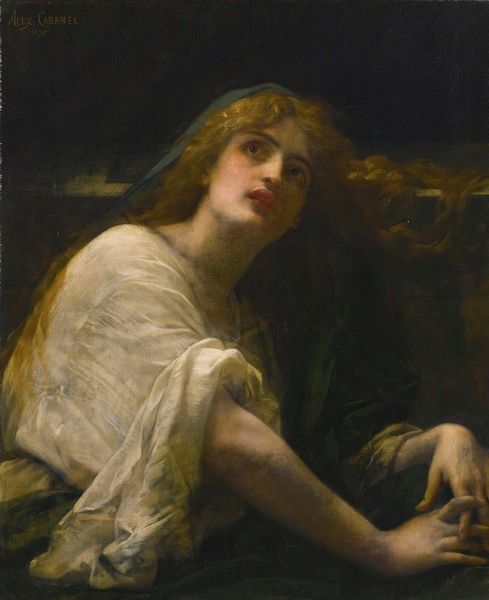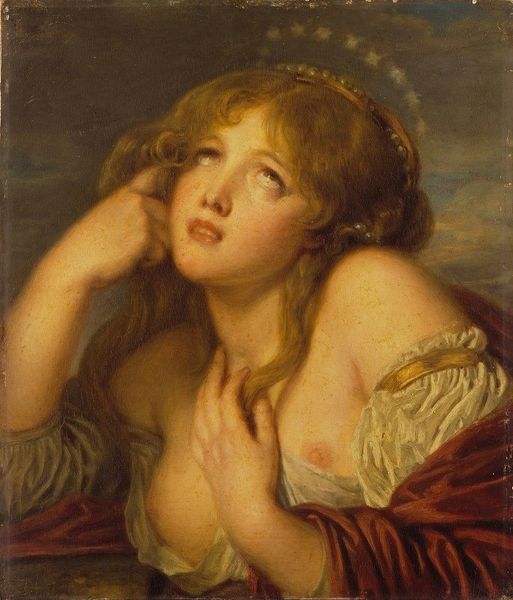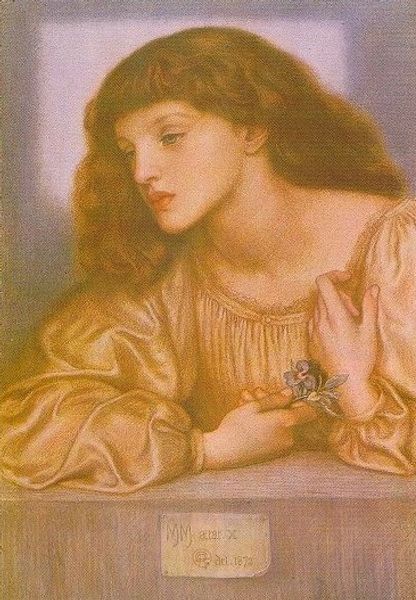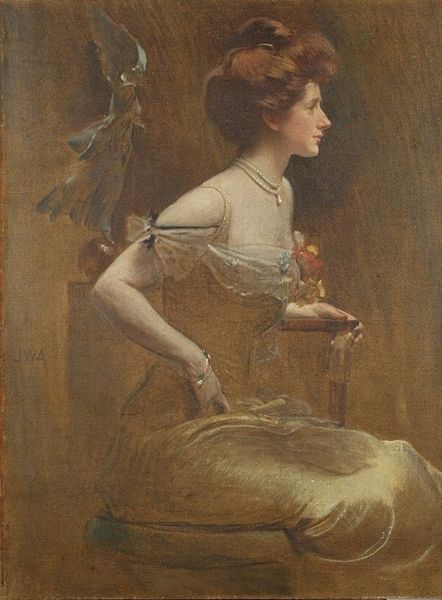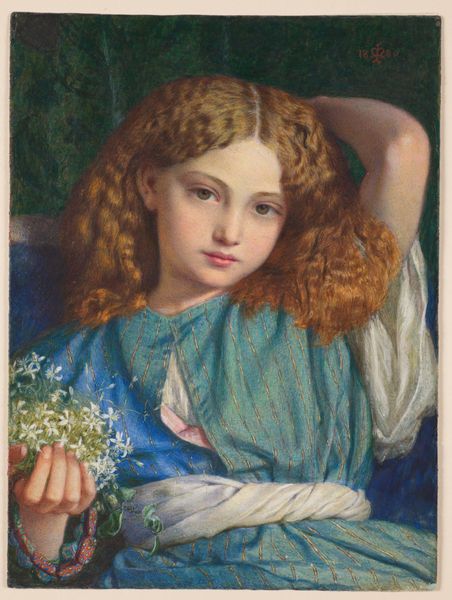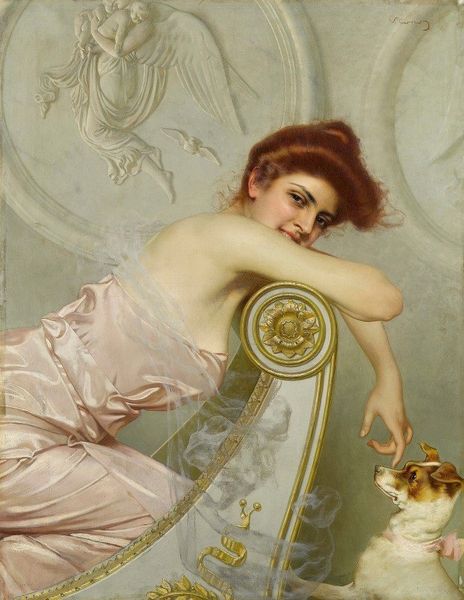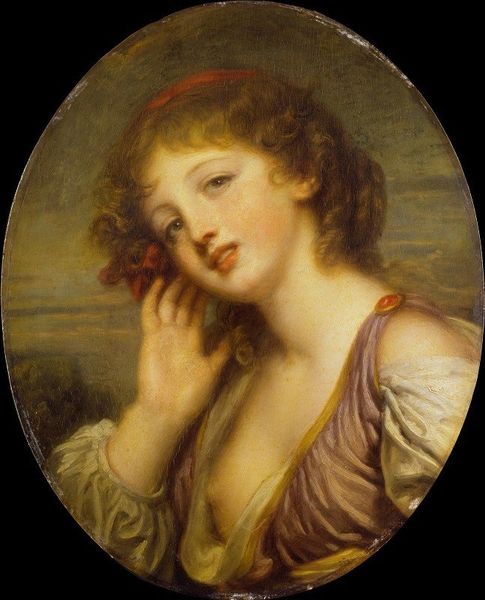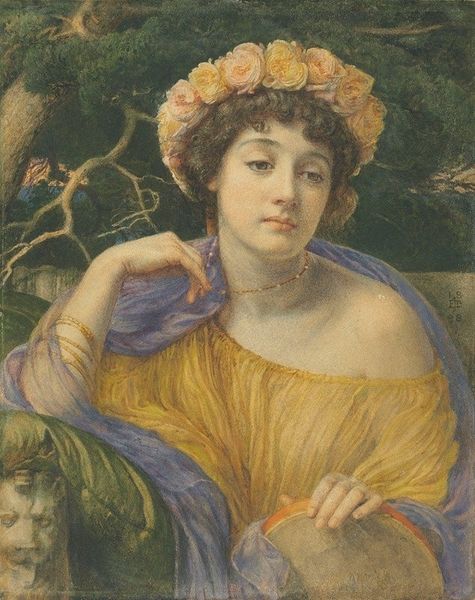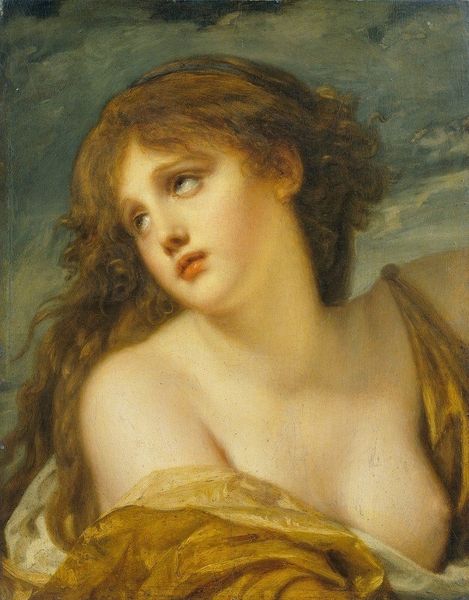
painting, oil-paint
#
portrait
#
gouache
#
allegory
#
painting
#
oil-paint
#
greek-and-roman-art
#
oil painting
#
romanticism
#
mythology
#
painting painterly
#
history-painting
#
academic-art
#
portrait art
#
realism
Copyright: Public Domain: Artvee
Lawrence Alma-Tadema painted this Bacchante, a follower of the Roman god Bacchus, in the late 19th century, capturing her revelry with cymbals and a leopard skin. The Bacchante’s leopard skin is more than mere decoration. It links her to the ecstatic cult of Dionysus, the Greek counterpart of Bacchus. The leopard, a symbol of untamed nature, connects the Bacchantes to the wild, primal aspects of human nature. We see echoes of this connection to wildness and ecstasy in other depictions of maenads, the Greek Bacchantes, throughout art history, from ancient pottery to Renaissance paintings. The cymbals, too, are vital. They symbolize the frenzied music that accompanied the Bacchantes’ rituals, meant to induce a state of trance and union with the divine. Music, as an emotional trigger, has been used in countless cultures to stir the soul and invoke powerful psychological states. This Bacchante, caught in a moment of ecstatic abandon, reflects how symbols can carry deep-seated cultural memories and emotional resonance.
Comments
No comments
Be the first to comment and join the conversation on the ultimate creative platform.
